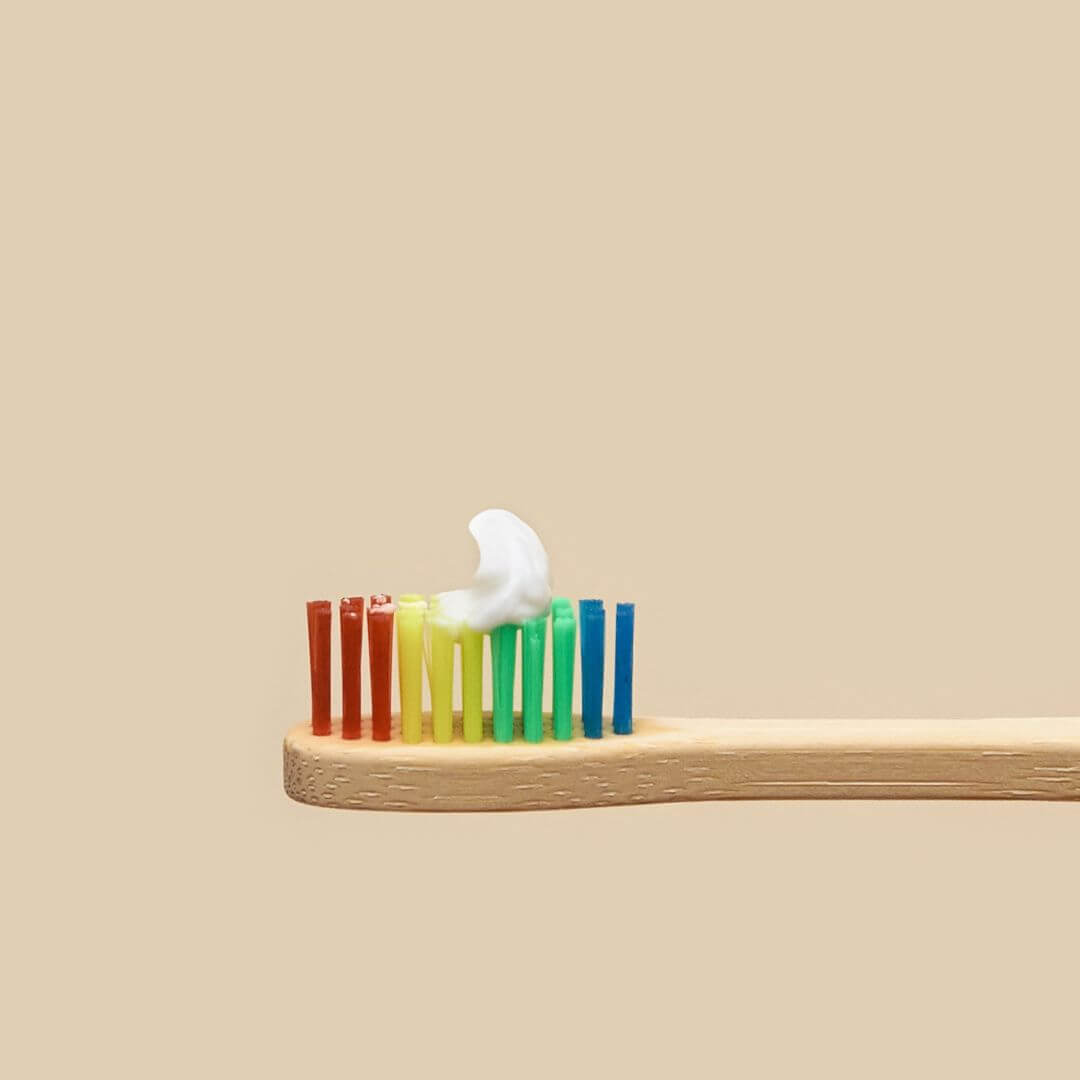Hydroxyapatite: Part 2
Update on Hydroxyapatite
 Since last year when my first article on hydroxyapatite went somewhat "viral" there have been some updates to the story.
Since last year when my first article on hydroxyapatite went somewhat "viral" there have been some updates to the story.
The SCCS released a new (2023) report on the safety of nano hydroxyapatite. You may be able to find it here. (They change their links sometimes.) New data was submitted to them and they've declared that one type of nano HAP appears to be safe for use in toothpaste and mouthwash under certain concentrations.
Based on the data provided, the SCCS considers hydroxyapatite (nano) safe when used at concentrations up to 10% in toothpaste, and up to 0.465% in mouthwash.
This safety evaluation only applies to the hydroxyapatite (nano) with the following characteristics:
- composed of rod-shaped particles of which at least 95.8% (in particle number) have an aspect ratio less than 3, and the remaining 4.2% have an aspect ratio not exceeding 4.9;
- the particles are not coated or surface modified.
Keep in mind that this applies to only one brand of nano HAP called nanoXIM•CarePaste, manufactured in Portugal by a company called FLUIDINOVA. This is the only brand of nano HAP on the market that the SCCS has approved as safe.
At the same time the EU appears to be in the process of banning nano HAP, although the specifics have not been announced yet. ( Source)
Needle-shaped nano HAP appears to be the most harmful form of the controversial substance. From the 2016 report:
From the oral 3-week repeat-dose study described in section 3.3.5.1, it can be deduced that needle-shaped hydroxyapatite nanoparticles (diameter: 3 – 7 nm; length: 27 – 46 nm) may exert systemic effects, as statistically significant changes were observed in the liver markers ALT, AST and ALP after oral administration of this material.
It is unknown if the 2023 SCCS report will affect the pending EU ban on nano-HAP (it likely will). The EU may ban all forms of nano HAP except FLUIDNOVA's product, although the legislation is still being drafted.
The latest revision of the proposed ban addresses the issue of microcrystalline HAP, that is, hydroxyapatite nanoparticles that are "glued" together to form larger particles so they can get away with being called "non-nano." The legislation
[...] clarifies the nano-material as ‘consisting of solid particles present, either on their own or as identifiable constituent particles in aggregates or agglomerates,’ which is an expansion of its previous definition. [Source]
In other words, if "non-nano" particles are made of nanoparticles, they would also be included in the ban.
 Is Hydroxyapatite Safe?
Is Hydroxyapatite Safe?
Hydroxyapatite exists in our bodies; it's the natural substance of which our teeth are largely comprised. But when we turn it -- or any substance for that matter -- into a nanoparticle, we alter it and it can affect our bodies in ways we're still understanding. Nanoparticles are so small they can cling to our blood platelets and make them clump. Certain shapes can slice through cells and cut our DNA strands. They can accumulate in our tissues, as the body doesn't know how to recognize and handle particles this small. Science is learning that particle shape and size are important factors in their cytotoxicity. Round particles may be safer. But, in general, nanoparticles are toxic to our body's macrophages, which are responsible for cleaning up waste and fighting infections. They're also toxic to the microglia -- the cells responsible for cleanup in the brain.
Nanoparticle-mediated toxic effects arise in the form of genetic damage, oxidative stress, and inflammatory responses. Moreover, there are five key aspects related to cellular changes and interaction, which include internalization by macrophages, DNA damage, cell death, as well as production of reactive oxygen species (ROS) and cytokines. (Source)
So when we assess the safety of hydroxyapatite, we have to consider the size, shape, and routes of exposure.
Reader question: Since nano hydroxyapatite has been used in Japan for 40+ years, wouldn't problems be popping up by now?
Yes, nano HAP has been used for many years in Japan. However, considering it was actually only one brand of toothpaste and we don't know if they were needle, rod, or spherical particles, controlled population studies would be hard to carry out. Someone may switch brands of toothpastes throughout their life and only a fraction of the population would have used the toothpaste. Fluoride toothpastes are quite popular in Japan.
So what can we do?
If you are set on using a hydroxyapatite toothpaste, you have a few options.
First would be to ask the toothpaste company in question which brand of HAP they use. If they use FLUIDNOVA, they have the SCCS's safety approval. However, most companies don't easily disclose their suppliers or even their shape and particle size. (I don't currently know which brands use which type of HAP.) Keep in mind that products marketed with "micro" hydroxyapatite are typically made from nanoparticles. If the company is less than forthcoming in their disclosures, that tells you something.
One brand of hydroxyapatite toothpaste reached out to me, called HAPPY Tooth. (Get it? HAP-py). (There are two companies that use this name, he was first.) The owner was very nice and clarified to me that his brand uses truly NON-nano microcrystalline hydroxyapatite. His particles are small enough to fill the dentin tubules of the tooth, but *not* small enough to wedge into the enamel. So, while his product can't remineralize enamel like a nano product could, it can help strengthen the dentin (the layer under the enamel) so it can reduce sensitivity if enamel is worn.
Hydroxyapatite or fluoride?
A large part of this discussion is which is better, fluoride or hydroxyapatite? I'm not a proponent of either; they both carry their own risks. It's like asking if we should use acetaminophen or ibuprofen to treat chronic headaches and thinking they're the only two options. There are non-drug options. There are root causes of the headaches that should be addressed. There are mineral deficiencies, gut health, lifestyle factors, diet, etc. all to consider.
The same applies to oral health. You can use hydroxyapatite or fluoride, but they're the bandaid solution to preventing cavities. They're the headache medicine you use every day to treat chronic headaches instead of getting to the root cause of the headache. Fluoride and hydroxyapatite don't address the root cause of tooth de-mineralization.
How can we remineralize teeth naturally?
The SCCS first published their the safety report of nano hydroxyapatite in 2016 and talk of a ban in the EU began. The following year, in 2017, the first hydroxyapatite toothpaste was released in the US. [ Source] The US has no proposed ban on the controversial substance so millions of marketing dollars have been spent marketing hydroxyapatite toothpastes here. (Including marketing to holistic dentists.) Consequently, consumers have become conditioned over the last five or so years to believe they need a "remineralizing" toothpaste. We've almost forgotten a world where toothpaste did its legal job of simply cleaning teeth.
Our bodies are smart. We have a built-in mechanism for remineralizing and demineralizing teeth. Phosphorous and calcium ions in the saliva in a non-acidic environment, will build enamel naturally.
If our mouth is continually in an acidic state due, calcium will leach from enamel. If the mouth is in a neutral to alkaline state, calcium, provided it's present in the saliva, will bind to enamel.
If we're calcium deficient, we will have less calcium in our saliva and teeth will be unable to naturally remineralize. (This happens a lot in pregnant women, when their bodies are robbed of calcium to build the bones and cartilage of the developing fetus.)
Cavities form when certain strains of strep bacteria thrive on the surface of the tooth. Feeding on simple sugars, these bacteria pump out acids as a byproduct. That continual exposure to acid weakens the enamel, eventually creating a hole in the enamel we call a cavity.
Brushing and flossing adequately, making sure to get enough calcium in our diet, keeping our mouths alkaline (simply swishing with baking soda after a meal or snack if you can't brush is a great way to do this) and limiting sugar is how we can keep our teeth healthy in general.
There are many other individual factors like mouth breathing, oral ties, medications that may deplete calcium, illnesses that may allow for oral overgrowth of bacteria and genetic factors that can make natural remineralization difficult. If we're unable to control these other factors, this is when we may need the aid of a drug like fluoride or a drug-like product like nano hydroxyapatite to prevent cavities. As with any drug, we always have to weight the benefits vs. the risks.
